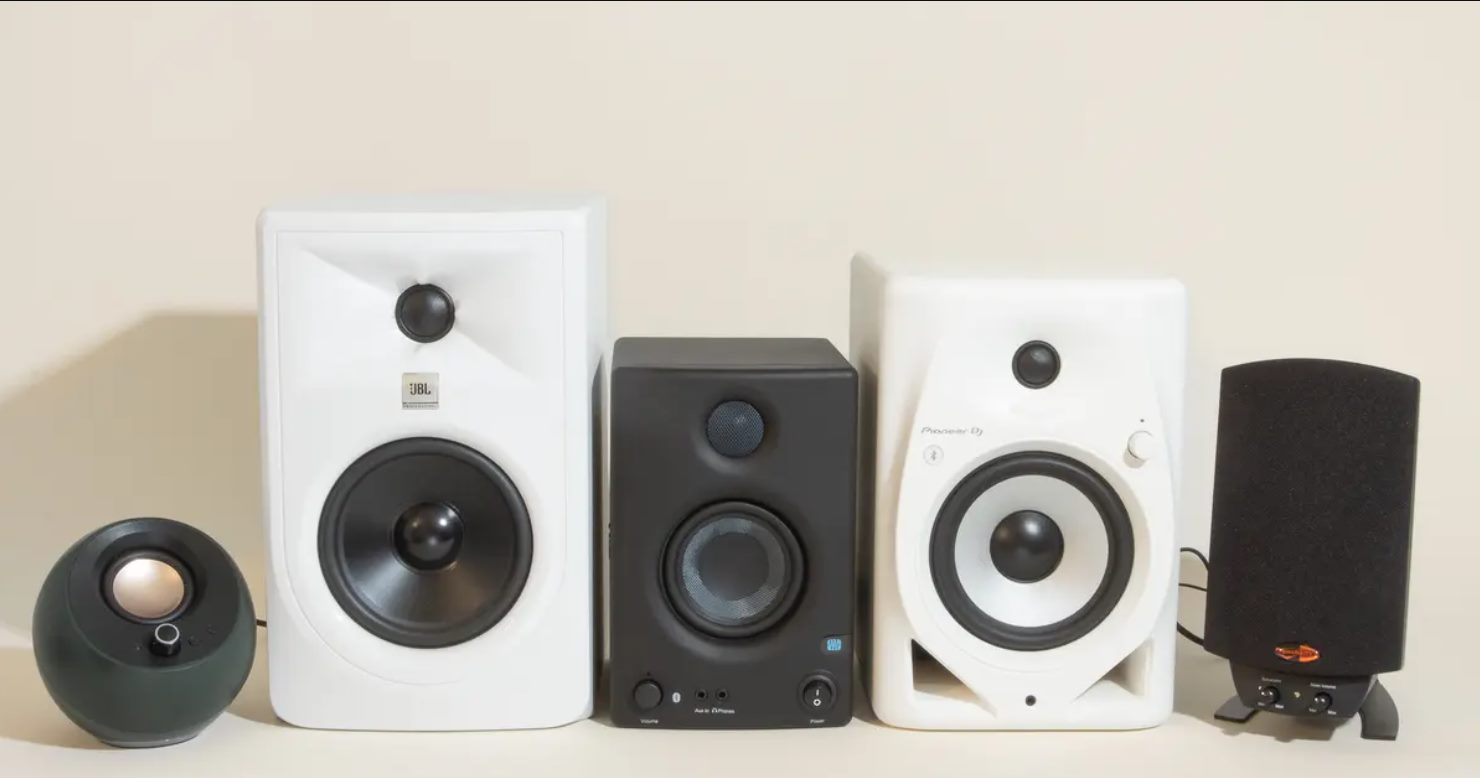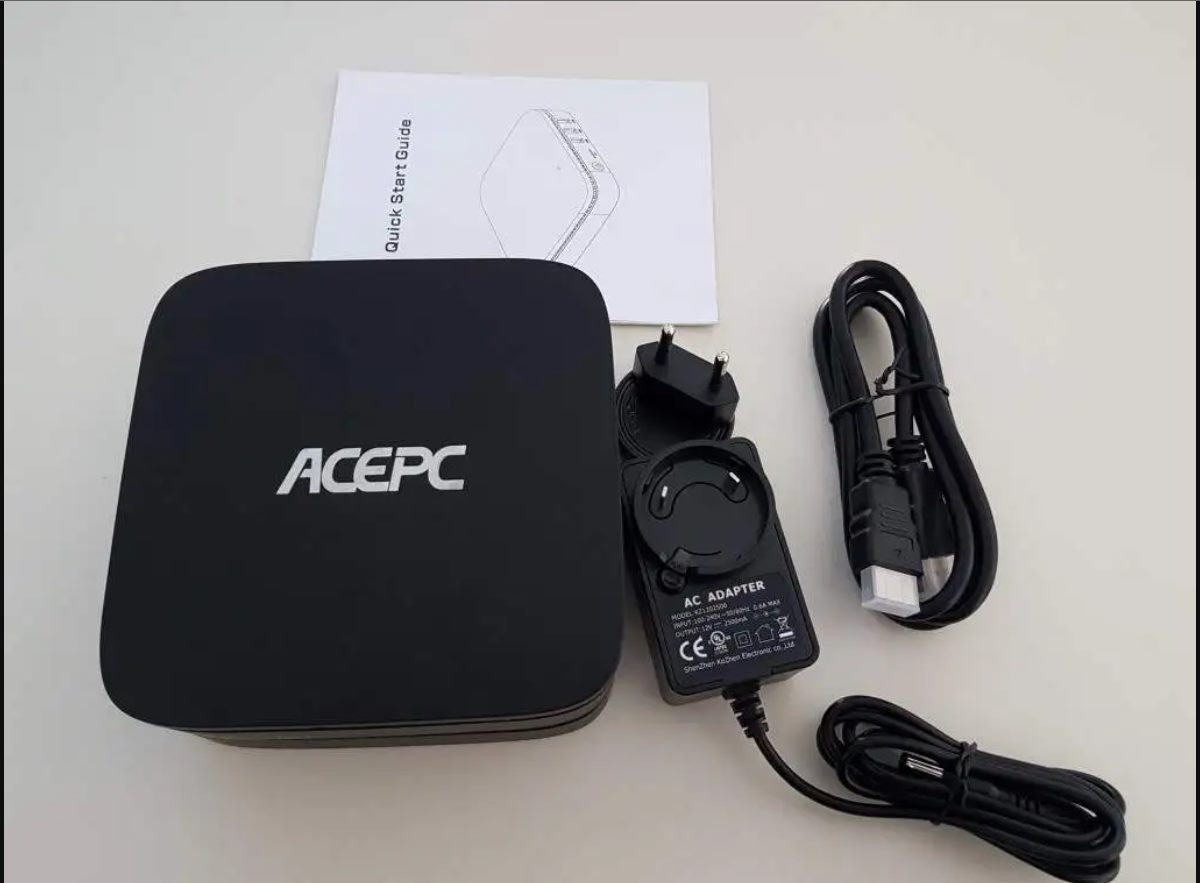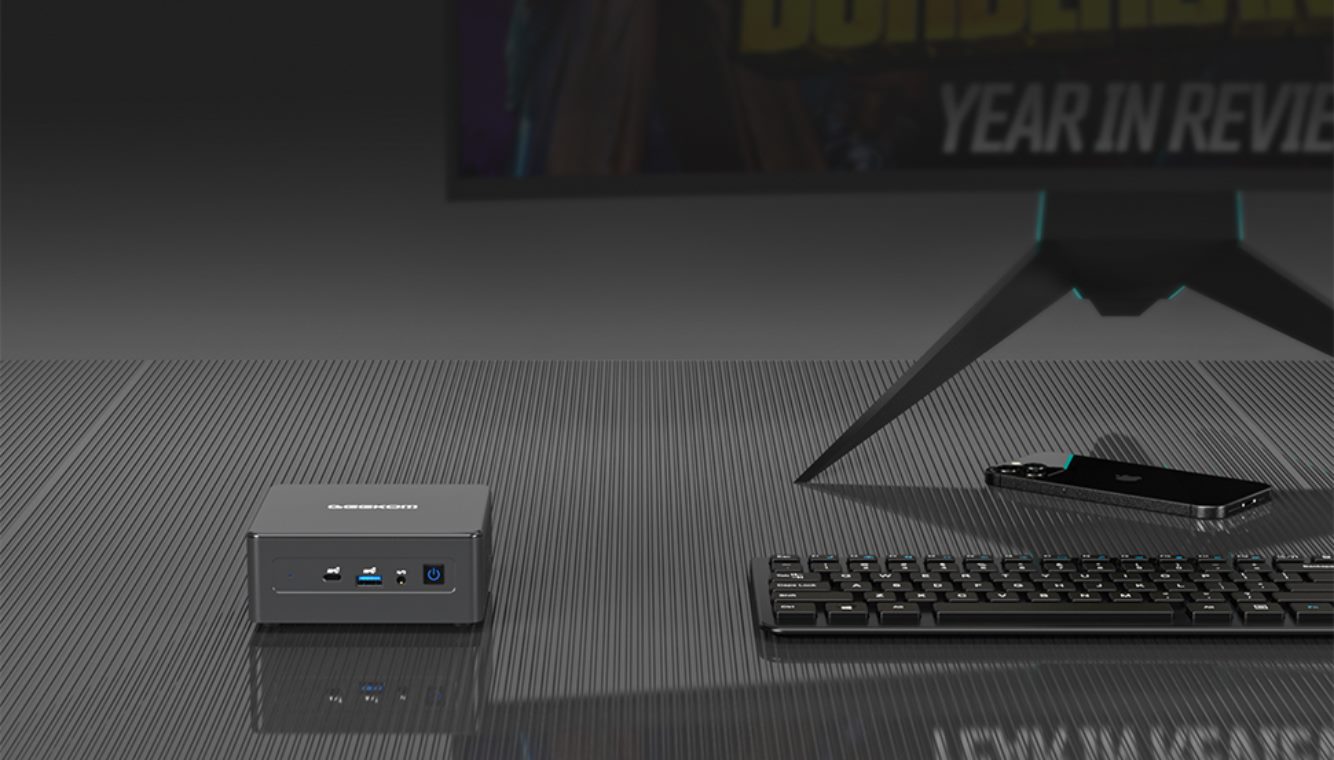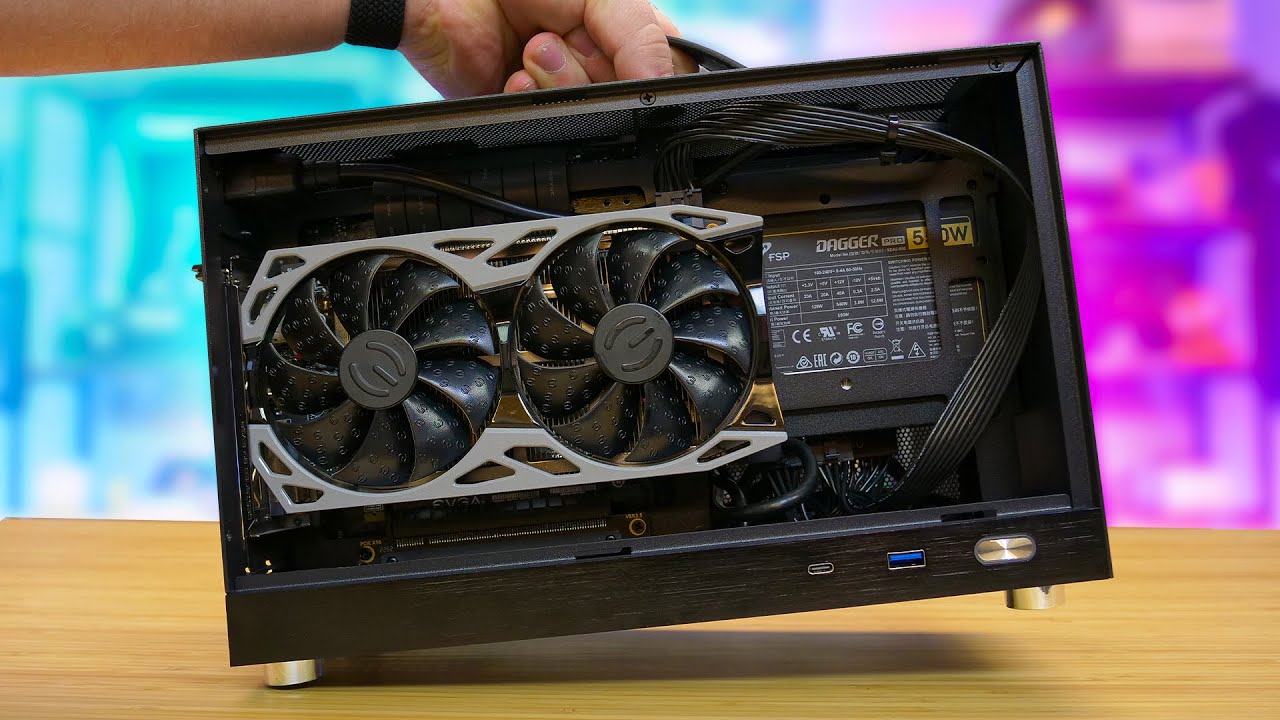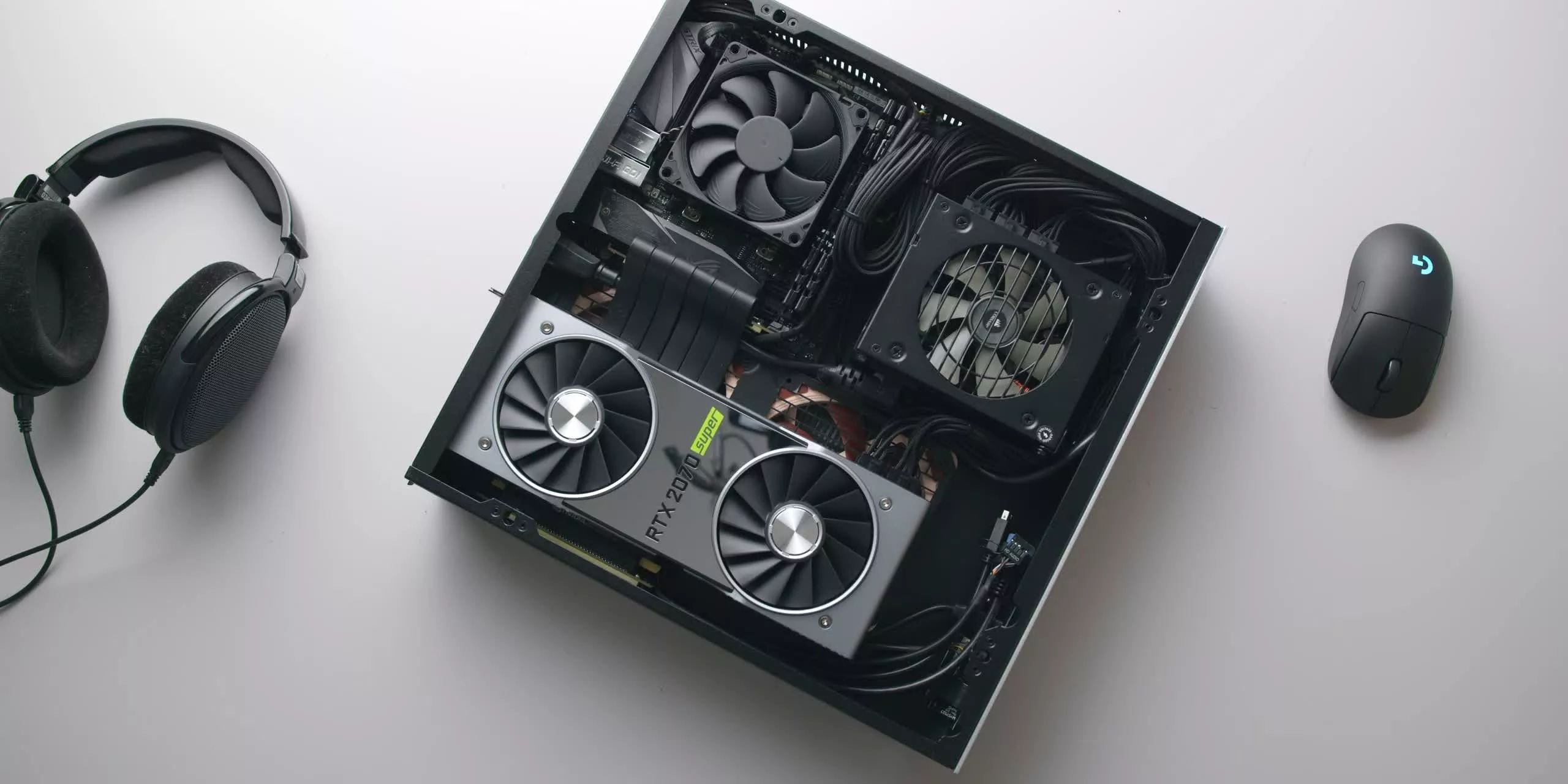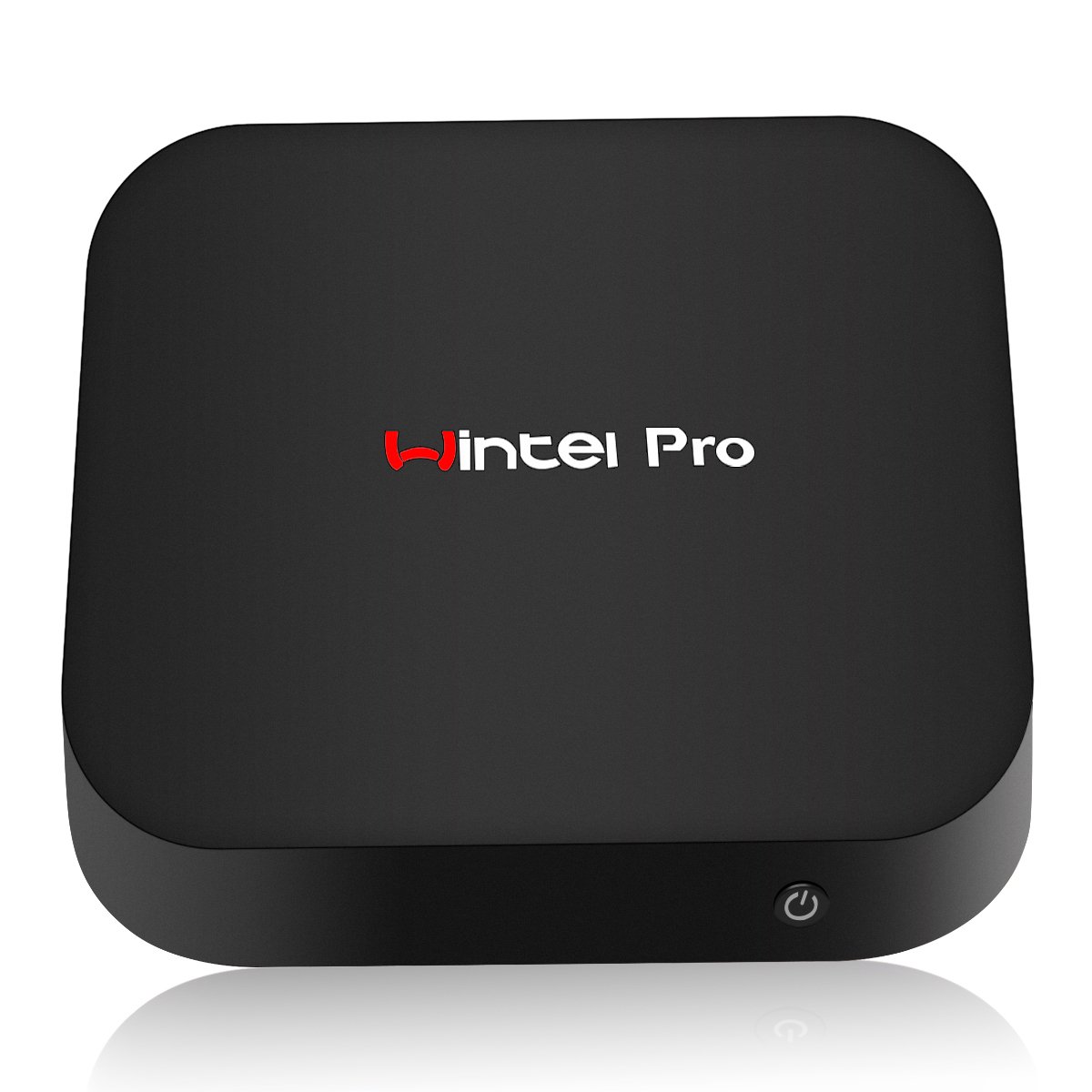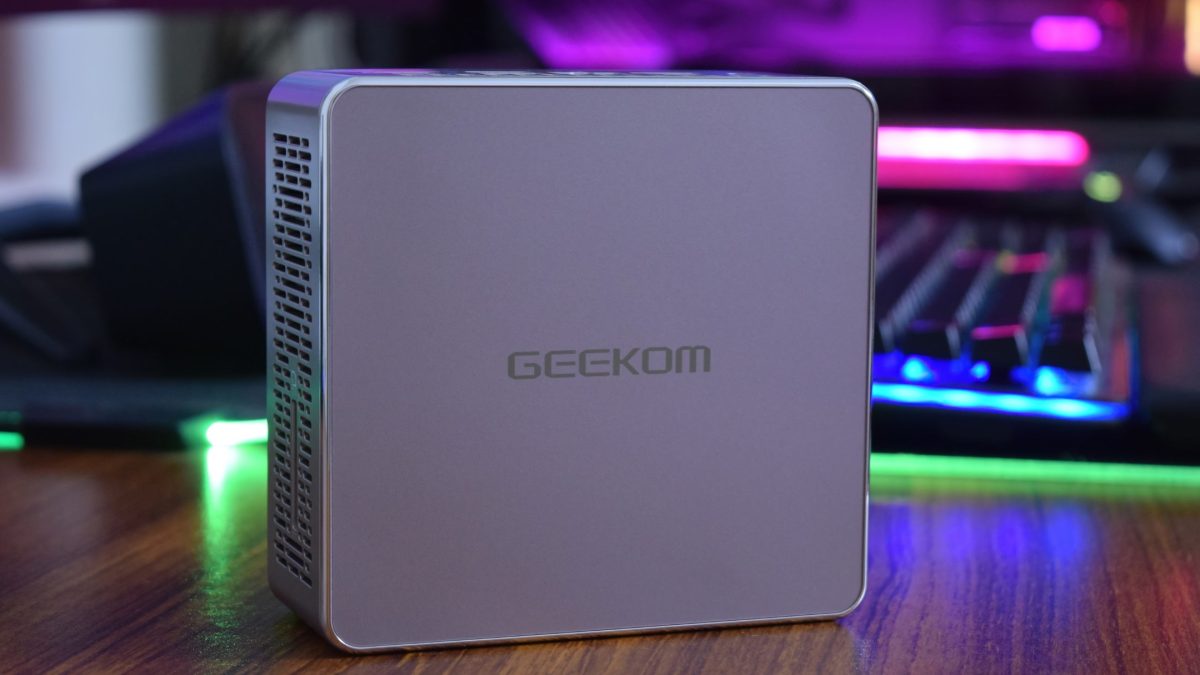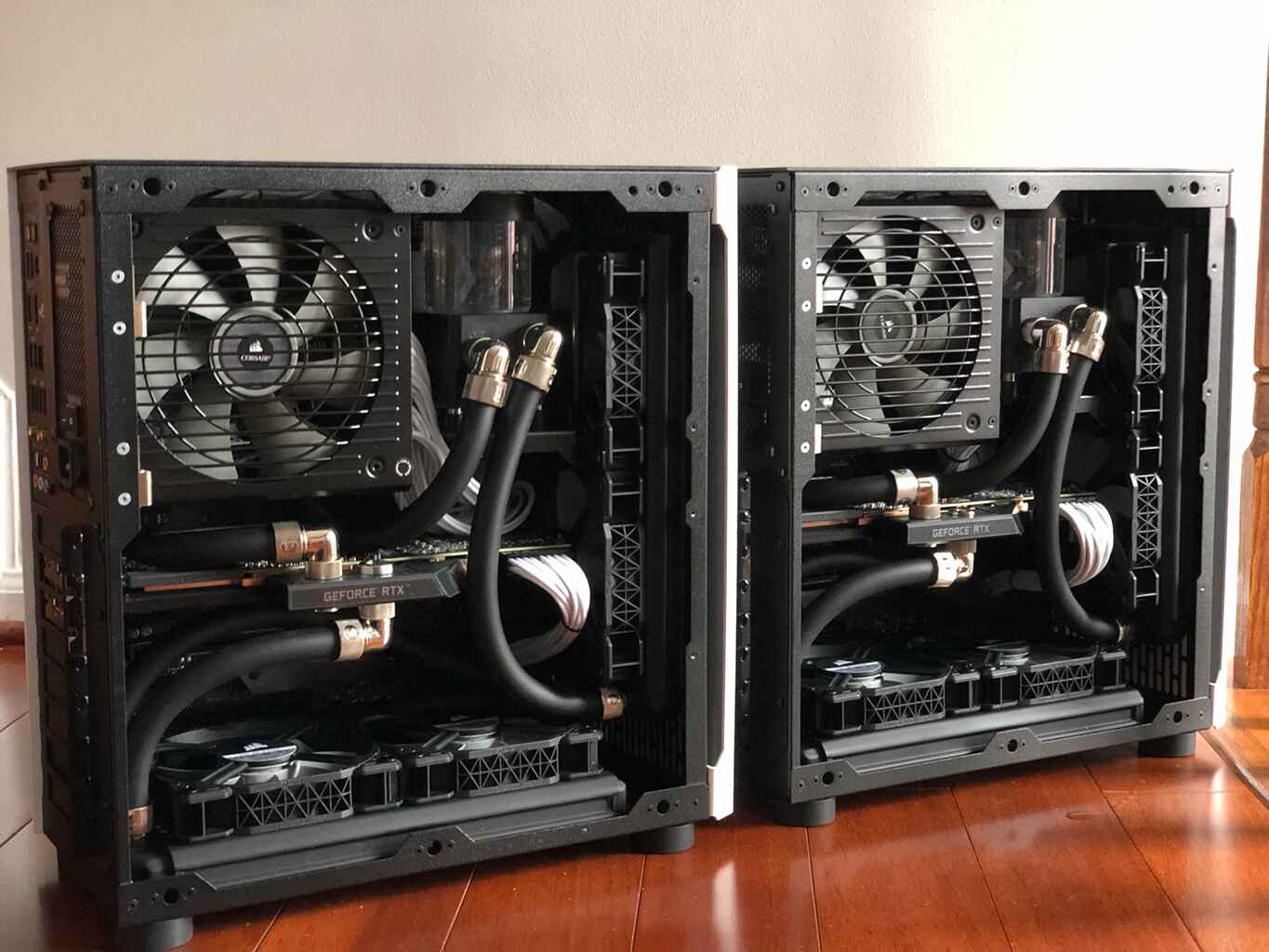Introduction
Welcome to the world of mini PCs! These compact and portable computers have gained immense popularity for their versatility and convenience. While they pack a punch when it comes to processing power and storage capacity, one crucial aspect that is often overlooked is the sound system. A good sound system can greatly enhance your multimedia experience, whether you’re watching movies, playing games, or listening to music.
However, choosing the right sound system for your mini PC can be a daunting task, especially with the myriad of options available in the market. It’s important to assess your needs and requirements before making a decision, as this will ensure that you find a sound system that perfectly complements your mini PC setup.
In this article, we will walk you through the process of choosing a sound system for your mini PC. We will explore the different components of a sound system, provide tips on selecting the right audio source and speakers, discuss speaker placement and size considerations, evaluate amplifier and receiver options, decode specifications and technical details, and finally, factor in budget limitations.
By the end of this article, you will have a clear understanding of the factors to consider when choosing a sound system for your mini PC, enabling you to make an informed decision that will significantly enhance your audio experience.
Assessing your needs and requirements
Before delving into the world of sound systems, it is crucial to assess your specific needs and requirements. Consider how you primarily use your mini PC and what you expect from the sound system. Are you a multimedia enthusiast who wants immersive surround sound for movies and games? Or are you more interested in high-quality audio for music playback?
Think about the space where your mini PC is located. Is it a small room or a spacious living area? The size of the room will determine the type and power of the sound system you need. Additionally, consider the acoustic properties of the room. Are there any sound-absorbing materials or hard surfaces that may affect the overall sound quality?
Determining your budget is another important aspect when assessing your needs. Sound systems range from budget-friendly options to high-end setups, and it is essential to establish a budget that aligns with your expectations.
Lastly, take into account the compatibility requirements of your mini PC. Ensure that the sound system you choose is compatible with your specific model and that you have the necessary inputs and connectors. Consider if you require any additional features such as Bluetooth connectivity or wireless options for added convenience.
By carefully assessing your needs and requirements, you can narrow down your options and focus on finding a sound system that will perfectly cater to your preferences and provide an immersive audio experience with your mini PC.
Understanding the different components of a sound system
Before diving deeper into choosing a sound system for your mini PC, it’s important to understand the different components that make up a sound system. This knowledge will help you make informed decisions when selecting the right setup for your needs.
The core components of a sound system include the audio source, speakers, amplifier or receiver, and cables/connectors. Let’s explore each of these components in detail:
1. Audio Source: The audio source is where the sound originates from. It can be your mini PC, a media player, a gaming console, or even a turntable. Consider the audio output options of your mini PC and ensure compatibility with the chosen sound system.
2. Speakers: Speakers are essential for reproducing sound. They come in various types, including bookshelf speakers, floor-standing speakers, and compact satellite speakers. Consider the size, power output, and frequency response of the speakers, as well as any additional features like built-in subwoofers for enhanced bass.
3. Amplifier or Receiver: The amplifier or receiver powers and controls the speakers. An amplifier is used in a stereo setup, while a receiver includes additional features like radio tuners and HDMI connections for surround sound setups. Pay attention to the power output, channel support, and connectivity options of the amplifier or receiver.
4. Cables/Connectors: Cables and connectors are responsible for transmitting audio signals between the different components. Ensure that you have the necessary cables and connectors to connect your mini PC to the sound system, considering options like HDMI, RCA, or optical cables based on your setup.
Understanding these components will allow you to make knowledgeable decisions when selecting a sound system. Assess your specific requirements and preferences to determine the ideal combination of these components for your mini PC setup.
Selecting the right audio source
The audio source is a fundamental component of your sound system, as it determines the quality and variety of audio content you can enjoy. When choosing an audio source for your mini PC sound system, it’s important to consider your preferences, connectivity options, and compatibility.
1. Mini PC: The most common and convenient audio source for your sound system is your mini PC itself. Most mini PCs have built-in sound cards or audio outputs that deliver decent sound quality. Check the available audio output options on your mini PC, such as HDMI, 3.5mm audio jack, or optical output, and ensure compatibility with your selected sound system.
2. External DACs and sound cards: If you are an audiophile or have higher audio quality requirements, you may consider investing in an external digital-to-analog converter (DAC) or a sound card. These devices help improve the sound quality by bypassing the internal sound card of your mini PC. Look for DACs or sound cards with high signal-to-noise ratio (SNR) and compatible output connections.
3. Media players and gaming consoles: Another option for your audio source is connecting your media player or gaming console to your sound system. Some media players and gaming consoles offer better audio quality or specialized audio formats like Dolby Atmos or DTS:X. Ensure compatibility and connectivity options between your media player/gaming console and the sound system.
4. Streaming services and wireless audio: With the rise of music and audio streaming services, you can also consider using your mini PC as a streaming device. Connect your mini PC to your sound system and enjoy music or audio content from popular streaming platforms. Additionally, explore wireless audio options like Bluetooth or Wi-Fi speakers that can directly connect to your mini PC or streaming devices.
Ultimately, the choice of audio source depends on your personal preferences, audio quality requirements, and compatibility considerations. Assess the available options for your mini PC setup, and select the audio source that best suits your needs, providing you with an enhanced listening experience.
Choosing the appropriate speakers
Selecting the right speakers for your mini PC sound system is crucial in creating an immersive audio experience. The speakers you choose will greatly influence the overall sound quality and the way you perceive audio content. Here are some factors to consider when choosing the appropriate speakers:
1. Speaker type: There are various types of speakers available, including bookshelf speakers, floor-standing speakers, satellite speakers, and soundbars. Consider the size of your room, the desired audio output, and the available space for speaker placement when deciding on the type of speakers.
2. Power output: The power output of speakers determines their volume and ability to handle dynamic sound range. Higher power output generally results in louder and more dynamic sound, but it’s important to match the power output with the size of your room and your listening preferences.
3. Frequency response: The frequency response of speakers indicates the range of frequencies they can reproduce. Look for speakers with a wide frequency response to ensure accurate reproduction of low bass frequencies and high treble frequencies for a well-balanced sound output.
4. Speaker sensitivity: Speaker sensitivity measures their efficiency in converting power into sound. Higher sensitivity speakers require less power to produce the same volume, making them suitable for mini PCs with limited power output. However, sensitivity should be considered in conjunction with other factors for optimal performance.
5. Additional features: Some speakers come with additional features like built-in subwoofers, tweeters for better high-frequency response, or wireless connectivity options. These features can enhance your audio experience and provide added convenience. Consider if any additional features align with your requirements.
6. Room acoustics: Take into account the acoustic properties of your room when choosing speakers. Rooms with hard surfaces may cause sound reflections and affect the overall audio quality. Consider speaker placement, room size, and the use of acoustic treatments to optimize the sound performance in your space.
By considering these factors and understanding your specific needs, you can choose speakers that suit your mini PC sound system and deliver the audio quality you desire. Take the time to research different brands, read reviews, and even audition speakers whenever possible to make an informed decision.
Considering speaker placement and size
The placement and size of your speakers play a crucial role in achieving optimal audio performance and creating an immersive sound experience. Here are some important considerations when it comes to speaker placement and size for your mini PC sound system:
1. Room layout: Assess the layout of your room and determine the best placement for your speakers. Consider factors such as the size and shape of the room, the position of your listening area, and any obstacles that may affect sound propagation. Ideally, speakers should be placed symmetrically in relation to your listening position for balanced sound distribution.
2. Speaker positioning: For stereo setups, speakers should generally be placed so that they form an equilateral triangle with your listening position. This positioning helps create a well-defined soundstage and accurate stereo imaging. Experiment with slight adjustments in speaker position to find the sweet spot for optimal sound quality.
3. Distance from walls and corners: Keep your speakers away from walls and corners to avoid unwanted reflections and bass buildup. Placing speakers too close to walls or corners can result in boomy or muddy bass. Allow a few feet of space between the speakers and room boundaries for better sound clarity and imaging.
4. Speaker size: Consider the size of your room when choosing the size of your speakers. Larger rooms generally benefit from larger speakers that can fill the space with sound. Conversely, smaller rooms may not require large floor-standing speakers and can make do with smaller bookshelf speakers without sacrificing sound quality. Ensure that the size of the speakers is proportionate to the size of the room for optimal performance.
5. Subwoofer placement: If you opt for a setup that includes a subwoofer for enhanced bass, the placement of the subwoofer becomes important. Experiment with different subwoofer positions in your room to find the spot that provides a balanced and immersive low-frequency response. Avoid placing the subwoofer in corners or against walls, as this can result in boomy bass.
6. Speaker stands and isolation: Consider investing in speaker stands or isolation pads to enhance speaker performance. Stands help position speakers at the optimal height and reduce vibration transfer to surfaces, resulting in better sound clarity. Isolation pads can also minimize vibrations and improve overall sound quality.
By taking into account these considerations for speaker placement and size, you can optimize the sound performance of your mini PC sound system. Experimentation and fine-tuning may be necessary to achieve the best results in your specific room configuration.
Evaluating amplifier and receiver options
The amplifier or receiver is a crucial component of your mini PC sound system as it powers and controls the speakers. When evaluating amplifier and receiver options for your setup, there are several factors to consider:
1. Power output: The power output of the amplifier or receiver determines how effectively it can drive the speakers. Consider the power requirements of your speakers and ensure that the amplifier or receiver can provide sufficient power for optimal performance. Higher wattage does not always mean better sound quality, so match the power output to your specific speaker needs.
2. Channel support: Decide whether you want a stereo setup or a surround sound setup. Stereo setups typically require a two-channel amplifier or receiver, while surround sound setups require multiple channels (e.g., 5.1 or 7.1). Ensure that the amplifier or receiver supports the number of channels required for your desired audio setup.
3. Connectivity options: Evaluate the connectivity options of the amplifier or receiver to ensure compatibility with your mini PC and other audio sources. Look for options such as HDMI, RCA, optical, and Bluetooth connectivity depending on your specific requirements. Additionally, consider if you need features like a built-in radio tuner or networking capabilities.
4. Audio formats: Check if the amplifier or receiver supports the audio formats you intend to use, such as Dolby Digital, DTS, or high-resolution audio formats. This is particularly important if you plan to watch movies or play games that have specific audio encoding formats for a more immersive experience.
5. Control and usability: Consider the user interface, remote control functionality, and overall ease of use of the amplifier or receiver. Ensure that the controls and settings are intuitive and easily accessible for a hassle-free audio experience.
6. Additional features: Some amplifiers or receivers come with additional features like built-in equalizers, room correction software, or network streaming capabilities. These features can enhance the audio performance or provide added functionality. Determine if any additional features align with your preferences and requirements.
7. Budget considerations: Evaluate the cost of the amplifier or receiver and ensure that it fits within your budget. Keep in mind that while high-end options may offer advanced features and superior sound quality, there are also budget-friendly options that can deliver satisfactory performance.
By carefully evaluating these factors, you can choose an amplifier or receiver that best suits your mini PC sound system requirements and delivers the desired audio performance for an immersive listening experience.
Decoding the specifications and technical details
When selecting a sound system for your mini PC, it is essential to decode the specifications and technical details to make an informed decision. Understanding these specifications will help you assess the performance and capabilities of the sound system. Here are some key specifications to consider:
1. Frequency response: The frequency response indicates the range of frequencies that the sound system can reproduce. Look for a wide frequency response that covers both low bass frequencies and high treble frequencies for accurate sound reproduction across the entire audio spectrum.
2. Impedance: Impedance is the measure of resistance that the speakers present to the amplifier or receiver. Ensure that the impedance rating of the speakers matches the amplifier or receiver’s output impedance for proper compatibility and optimized performance.
3. Signal-to-noise ratio (SNR): The signal-to-noise ratio measures the amount of background noise produced by the sound system. A higher SNR indicates a cleaner audio signal with less unwanted noise. Look for sound systems with a high SNR to ensure clear and distortion-free audio playback.
4. Total harmonic distortion (THD): Total harmonic distortion measures the level of distortion introduced into the audio signal by the sound system. Lower THD values indicate less audible distortion. Opt for sound systems with lower THD ratings to maintain audio fidelity and accuracy.
5. Power output: Pay attention to the power output of the amplifier or receiver as it directly affects the volume and dynamics of the sound. Consider the power needs of your speakers, the size of your room, and your listening preferences when assessing the power output of the sound system.
6. Connectivity options: Look for sound systems that offer a variety of connectivity options, such as HDMI, RCA, optical, or Bluetooth. These options allow you to connect your mini PC and other audio sources seamlessly, providing flexibility and convenience for your setup.
7. Dimensions and weight: Consider the dimensions and weight of the sound system components, such as speakers or the amplifier/receiver, to ensure they can be accommodated in your available space. Measure your space and compare it with the dimensions provided to ensure a proper fit.
By deciphering these specifications and technical details, you can gain a deeper understanding of the performance capabilities and compatibility of the sound system components. This knowledge will enable you to make an informed decision that aligns with your audio preferences and requirements for your mini PC setup.
Factoring in budget limitations
When choosing a sound system for your mini PC, it is important to consider your budget limitations. Setting a budget ensures that you find a sound system that not only meets your audio requirements but also aligns with your financial constraints. Here are some tips for effectively factoring in your budget limitations:
1. Determine your budget: Start by determining how much you are willing to spend on a sound system. Consider your overall budget for the entire mini PC setup and allocate an appropriate amount for the sound system. This will provide a clear guideline when evaluating different options.
2. Prioritize your audio needs: Identify your priorities when it comes to audio quality and features. Determine which aspects of the sound system are most important to you, such as speaker performance, amplifier quality, or additional features. Prioritizing your needs will help you allocate your budget accordingly.
3. Research and compare prices: Conduct thorough research and compare prices of different sound system components. Look for deals, discounts, or bundled packages that offer good value for your money. Keep in mind that expensive doesn’t always equal better quality, so it’s essential to read reviews and consider the overall value proposition.
4. Consider future upgrades: If your budget is limited, it may be beneficial to invest in a sound system that allows for future upgrades. Consider components that are modular or offer room for expansion. This way, you can start with a more budget-friendly setup and gradually upgrade as your finances permit.
5. Assess refurbished or used options: Don’t overlook the potential of refurbished or used sound system components. Reputable sellers often offer refurbished items at a lower cost without compromising on quality. Just be sure to purchase from trusted sources and inquire about warranty coverage.
6. Evaluate cost-to-performance ratio: Assess the cost-to-performance ratio of the sound system components. Look for options that provide good performance and audio quality relative to their price. It’s crucial to strike a balance between your budget and the quality you expect from the sound system.
7. Consider long-term investment: Remember that a sound system is an investment in your audio experience. While it’s important to stay within your budget, consider the long-term benefits of investing in a higher-quality sound system that will provide better audio performance and longevity.
By factoring in your budget limitations and following these tips, you can find a sound system that offers a balance between quality and affordability. Remember, it’s not just about getting the most expensive option, but about finding the right sound system that fits your budget and fulfills your audio requirements.
Conclusion
Choosing a sound system for your mini PC is an important decision that can greatly enhance your audio experience. By assessing your needs and requirements, understanding the components of a sound system, and considering factors such as audio source selection, speaker choice, placement and size considerations, evaluating amplifier and receiver options, decoding specifications, and factoring in budget limitations, you can make an informed decision that suits your preferences and constraints.
When selecting a sound system, remember to prioritize your audio needs and consider the specific requirements of your mini PC setup. Take time to research and compare different options, read reviews, and even audition speakers whenever possible. Additionally, don’t overlook the importance of properly placing and positioning your speakers for optimal sound performance in your room.
Whether you’re a movie enthusiast, a music lover, or a passionate gamer, selecting the right sound system can dramatically enhance your multimedia experience. The right combination of components, technical specifications, and budget considerations will provide you with immersive sound quality and an enjoyable audio journey.
So, take the time to evaluate your options, understand the technical details, and make a decision that aligns with your preferences and budget. With the right sound system, your mini PC will become an entertainment powerhouse, delivering crystal-clear sound and enveloping you in a world of audio bliss.







